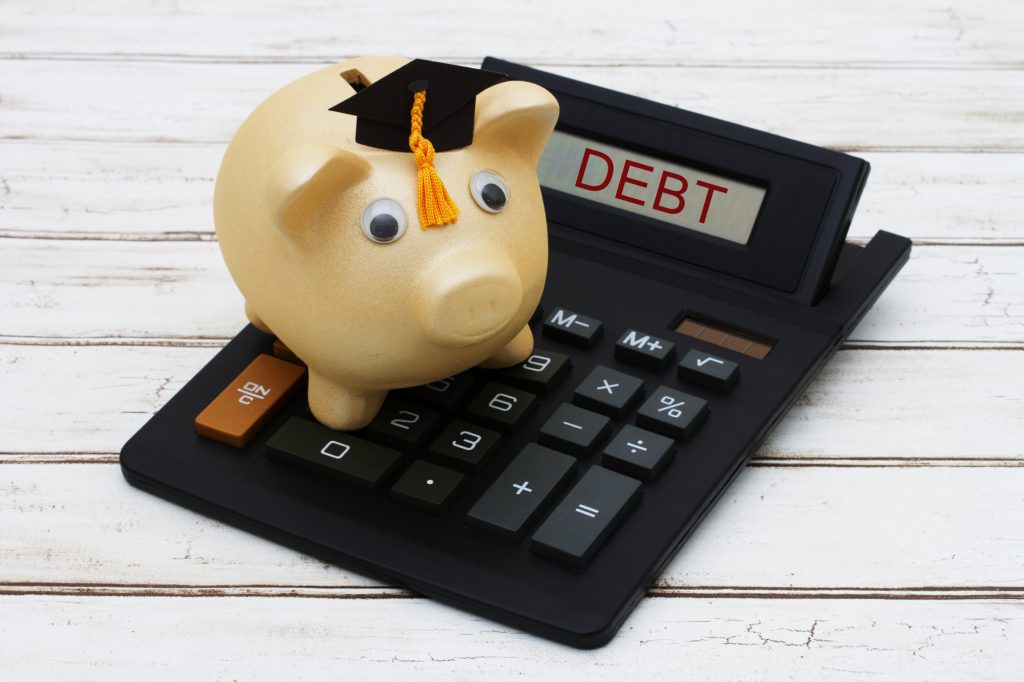Student loan debt is an epidemic that’s reached a staggering milestone. Graduates are dealing with the highest student loan debt ever. They have more than $1.5 trillion to pay back to Uncle Sam and private loan companies.
How did we get here? How did we go from $600 billion in school loan debt only a decade ago to the mountain of today?
There are many factors, and few of them are going away. In the meantime, students face six-figure debt before they enter the workforce.
Learn what caused these problems, what options students have to help combat the debt, and its impact on their lives below.
For-Profit Colleges Help Create Highest Student Loan Debt Ever
While the cost of college is high, the institutions themselves were not for profit in the past. They paid for salaries, infrastructure, and more from a mix of tuition and donations.
It was possible to go to a state school for a lower amount than a private institution.
Then colleges and universities sprang up that were for profit. Many inflated graduation numbers and job placement statistics to get students to apply and take on the extra debt. Many times, the colleges weren’t accredited, and the degrees were worth little in the actual job market.
Students didn’t have access to financial aid options available to those interested in accredited schools. They graduated with high loan debt and little prospects for a job that could help pay it off.
College Debt Exceeded Income
College loans have long been difficult to pay off. The number of graduates declaring bankruptcy for student loans was so bad the government changed bankruptcy rules to make them ineligible.
Still, loan amounts were low enough that many students could get a job and make regular payments. The days of a 10-year repayment plan are gone. Students graduate with loan amounts that far exceed the income of their first jobs.
Faced with the rigors of adulthood and low paying jobs, they let student loans fall to the wayside. The loans continued to gain interest until the student defaults.
Private Loans Elevated Interest Rates
Many years ago, a student applied for financial aid and a mix of grants and federal student loans to pay for college. The federally backed loans had graduated interest rates lower than those found in the private sector.
The government decreased its investment in higher education. Students and parents needed to find alternative methods to pay for college. Private student loans have higher interest rates and longer payback times than their federally funded counterparts.
Student loan balances climbed. The burden of payment shifted from the government to students and parents. Student loans are even dragging down the economy.
Careers Want More Education
College was once a place for the elite. Your average Joe could graduate from high school and earn a great wage without a degree.
Skills increased, and careers began placing more importance on a college education. This led more people to get their undergraduate degree.
For many careers, that is no longer enough. While people can still get a good paying job with an undergraduate degree, many places want employees to earn a graduate degree. Even if they don’t go straight from undergraduate to graduate, employers urge them to continue their education while at the job.
They say this helps the employee advance. In reality, they’re adding more debt without a guarantee of increased income.
Graduates Take on More Debt
As graduates face student loan debt, they also take out credit cards and auto loans. They continue to build more debt because of stagnant income and poor money management. They also pay for items with credit cards.
Credit card companies and their collection agencies tend to be more aggressive than student loan collectors. Student loan companies understand they can get money through wage garnishment and claiming tax refunds without worry of bankruptcy.
Credit card companies can end up losing the money through bankruptcy. Graduates feel pressured to pay off credit card debt instead of student loan debt.
Student loans with no credit can help pay for education, but it’s important to manage the debt.
Plan for Your College Debt
Unlike most other types of debt, you can plan for your college debt. When you go into it, you have an idea of how much you’ll end up in debt and have four years to plan for it.
Live far below your means and work with your employers to have it taken out of your paycheck. It’s easier to pay if you never see the money.
Don’t take on more debt. Cut up your credit cards, don’t eat out, and drive an inexpensive car until you have the income to live the life you want. Student loan debt can haunt you for decades if not taken care of.
Choose a Trade Instead
The best way to avoid college debt is to not go to college. There are many jobs that have apprenticeship programs or hire from less expensive vocational schools. They want people with specific skills and pay well.
Learning a trade through an apprenticeship can take years. You’ll end up with little or no debt from it and a valued skill set that you can take anywhere.
If you choose a vocational or technical school, there are financial programs and scholarships to decrease the cost even further.
Expect Higher Student Loans to Continue
While many countries provide free or low-cost tuition to universities, the U.S. government continues to withdraw funding from higher education. There are some states providing funding for free tuition to residents, but they are few, and there’s no guarantee other states will follow suit.
The U.S. is in the grip of the highest student loan debt ever, and it’s likely to climb further before getting better. A series of missteps in the political, educational, and banking communities caused the problem, and it takes time to reverse direction.
If you want to learn more about the student loan debt crisis or how to earn additional money to help pay off that student loan, then check out our article on how to choose stocks.

